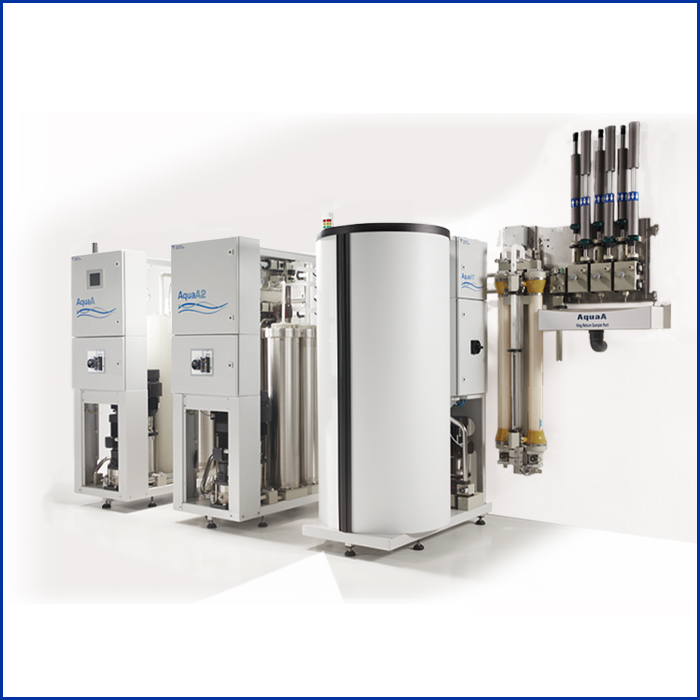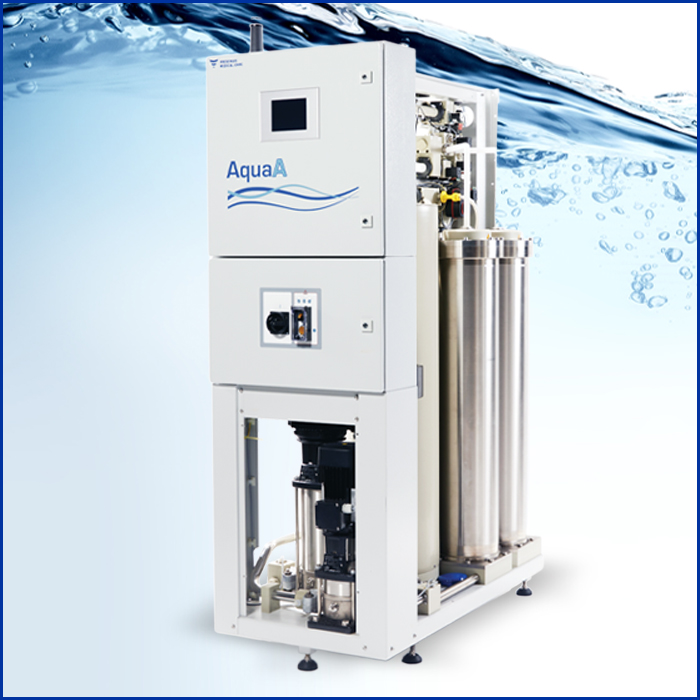Advancing Interoperability to Reduce Provider Burden and Improve Patient Care
When patient data is fragmented across many providers, it is challenging to coordinate effective care, from both a quality and a cost perspective. The advent of value based care systems has made information sharing a more important metric of success. However, it is true interoperability—the ability for large networks to communicate with one another—that will deliver on the promise of "interconnected intelligence." Fresenius Medical Care North America (FMCNA) is working with a consortium of other healthcare organizations to develop common standards and a practical framework for seamless data exchange.
With patient data coming from multiple venues of care, nephrologists are challenged with "connecting the dots" as well as coordinating across diverse providers to deliver quality patient care. There is a pressing need to advance interoperability and data sharing across information silos to reduce the provider burden. Acumen 2.0 powered by Epic Systems, in conjunction with FMCNA's broader interoperability program, is providing one version of "interconnected intelligence" to meet this need.
Timely and relevant access to patient data is a key requirement in providing quality care for chronic kidney disease (CKD) and end stage renal disease patients.1 Early CKD stage identification and progression management rely on accurate and relevant lab data. Empowering patients to make informed decisions on modality choice requires monitoring CKD progression and referral for patient education.2 Optimal dialysis starts at home or with an arteriovenous (AV) fistula instead of central venous catheter (CVC) and is predicated on timely referral of CKD patients for vascular access.3
Looking ahead, the transition to value based care is dependent on the ability to aggregate and analyze population-level data to improve quality outcomes with smarter spending. The promise of personalized, precise renal disease care with targeted interventions tailored to individual patient needs requires the ability to manage clinical data sets longitudinally. Simply put, current and future goals for patient care require a holistic view of the records that "follow the patient," offering a comprehensive view of the patient journey as well as support for the nephrologist. To do this, we need to design and deliver data sets that transcend the physical walls of care venues—be it the CKD clinic, the patient's home, the dialysis unit, or an inpatient facility.
The current reality of health information technology is that patient information is largely siloed and fragmented across the multiple systems and disparate venues of care that the patient encounters. For clinicians taking care of patients with a complex mix of chronic medical issues, depression, cognitive decline, functional impairment, and adverse social determinants of health, the time required to communicate with extended care teams is not reimbursed in a fee-for-service structure. As a result, patients are treated by a federation of service providers each doing their best to meet the needs of the individual but also meet their financial goals.
For care providers with many competing priorities, there may be no compelling business case to implement communication standards; doing so has often come at the opportunity cost of other reimbursable services. The transition to value based care models and shift toward "value and outcomes rather than units" has provided the impetus to establish communication standards and to increase information sharing. Providers need portable, integrated patient records that encompass data, regardless of the physical space where the data originated. This information should also be presented to the right clinician at the right time in a workflow-friendly fashion.
According to the 21st Century Cures Act, the term interoperability means health information technology that allows for both the exchange and use of information between two or more systems.4 More specifically, health information exchange (HIE) often refers to exchanging information between two or more healthcare organizations or providers. Sometimes, HIE may also refer to an organization that is responsible for facilitating this exchange when conducted in a particular way. This means that interoperability is different than health information exchange. Exchange is necessary for interoperability, but it is not sufficient by itself to achieve health information interoperability.
Interoperability occurs when information flows appropriately across organizational, vendor, and geographic barriers and is retrievable and consumable by clinicians for patient care. The emerging goal is to advance interoperability and systematically present relevant patient data in the context of a provider workflow. FMCNA has partnered with Epic to develop Acumen 2.0—the next generation of nephrology practice electronic health record (EHR) system—specifically to achieve these objectives for its physician customers.5 Acumen 2.0 is a single instance of Epic with logical separation across independent nephrology practices within the system. By connecting with Epic's industry leading CareEverywhere network, Acumen 2.0 allows for interoperabilty with other Epic instances and provides several value propositions:
- Meeting CMS quality metrics for Promoting Interoperability
This is achieved through consuming outside records; supporting electronic referral loops by receiving and incorporating health information; and reconciling problems, allergies, and medications. Figure 1 shows the range of interoperability options and value delivered by Acumen 2.0.
FIGURE 1 | Acumen 2.0 interoperability value continuum
- Presenting a unified patient chart in workflow context
Doctors can look up a patient's chart anywhere in the country with seamless integration into clinician workflow. There is automated connectivity with Epic hospitals and connectivity with non-Epic providers via CommonWell/Carequality. Figure 2 shows an example of patient data from multiple venues of care presented within the Acumen 2.0 workflow context.
FIGURE 2 | Acumen 2.0 reconciling patient data into chart
(c) 2019 Epic Systems Corporation. Used with permission.
(c) 2019 Epic Systems Corporation. Used with permission.
- Offering patient benefits
Information is available electronically on demand to/from Acumen providers and external providers, which eliminates duplicate or redundant labs and diagnostic studies.
- Helping to transition to value based care
Data from care networks and interoperability help networks improve quality performance and cost. Registries and robust population management tools identify patients with gaps in care for timely intervention and give new insights into high-risk populations.
What if you had a cell phone plan that only allowed you to call other customers within your carrier's network? That's the situation for most healthcare providers today as they are constrained within data-sharing networks with membership limited by geographic or technology (EHR vendor) lines (Figure 3).6 Epic's leading CareEverywhere network only works with other Epic instances. CommonWell is a competitive vendor collaborative that works with other EHR vendors that incorporate CommonWell standards into their technology.7 eHealth Exchange is the largest public-private network anchored by large federal agencies, educational institutions, and leading private participants such as Kaiser Permanente.8 Other regional HIEs and exchanges have geographic membership limitations.
FIGURE 3 | Fragmented data-sharing networks
*Utilization data represents transactions from the January 2014 inception of Commonwell through September 2017
The Sequoia Project is a nonprofit, independent, trusted advocate for national health information exchange initiatives.9 It stewards existing programs, provides education, and incubates new programs. In 2018, the Sequoia Project recognized that it was unlikely any single network could serve the needs of the entire country, given the history of health IT. The Sequoia Project partnered with health IT leaders in public and private sectors to create Carequality.10 Carequality is a collaboration of the entire healthcare community formed to address the fragmented data-sharing network challenge. It is not a network—instead, it is a national-level, consensus-built, common interoperability framework. Carequality is designed to enable data exchange between and among health data-sharing networks. (By contrast, CareEverywhere and CommonWell are networks.) It brings together EHR vendors, record locator service providers, and other types of existing and disparate networks from the private sector and government to determine technical and policy agreements that will enable the data flow.
The most significant accomplishment of the Carequality framework is the "Golden Spike agreement" between the Epic Carequality and CommonWell consortium to implement this framework. Collectively, this agreement represents 90 percent of the acute EHR market and 60 percent of the ambulatory EHR market (Figure 4).
FIGURE 4 | Carequality "Golden Spike agreement" implications
- CommonWell has agreed to offer an implementation of the Carequality "directed query" connectivity to its members.
- Epic has implemented Carequality for nearly 100 percent of its customer base.
- Carequality has agreed to support access to CommonWell's record locator service.
- Carequality has dramatically lowered friction for widespread "query" interoperability across all major EHR systems.
- CommonWell EHR vendors offer Carequality query at no charge to providers.
Fresenius Kidney Care is developing core information technology capabilities to facilitate bi-directional data exchange between its dialysis facilities and external care providers. Using the Continuity of Care Document recognized standard, Fresenius Kidney Care clinical data can be exchanged and ingested by an external system. Fresenius Kidney Care is also establishing connections with the national CommonWell, Carequality, and eHealth Exchange networks. This will enable data originating from external patient care providers to be displayed in eCube Clinicals, a Cerner product, (and Fresenius Kidney Care's system in the dialysis units), to facilitate care coordination. This addition will allow illustration of Fresenius Kidney Care's benefit from the Golden Spike agreement.
Fresenius Kidney Care's initiatives with CommonWell, Carequality, and eHealth Exchange are advancing interoperability and data sharing with external care providers, resulting in a longitudinal record of care accessible by the dialysis patients' diverse care teams. Acumen 2.0 reconciles patient information directly into the nephrology practice EHR systematically, eliminating the need to fax information or log into external care portals. Collectively, these efforts by FMCNA aim to deliver on the promise of interoperability and workflow integration to provide interconnected intelligence.
Meet Our Experts
AHMAD SHARIF, MD, MPH, SCPM
Senior Vice President, Chief Medical Information Officer, Fresenius Medical Care North America
Ahmad Sharif oversees clinical IT systems for FMCNA and formerly served as chief medical information officer for a Tenet Health market. He was awarded a full scholarship to attend classes at Harvard University, holds an advanced project management certification from Stanford University, and completed his master's degree in public health and management from the University of North Texas.
SAM GOPAL
President, Acumen Physician Solutions
Sam Gopal received his bachelor's degree in mechanical engineering from the Indian Institute of Technology, master's degree in industrial engineering from Purdue University, and master's degree in management from Harvard University Extension School. Prior to joining FMCNA, he held technology consulting, strategy, and product innovation roles in various industries including information management, defense logistics, semiconductor, and automotive supply chain distribution.
References
- Inker LA, Astor BC, Fox CH, et al. KDOQI US commentary on the 2012 KDIGO clinical practice guideline for the evaluation and management of CKD. Am J Kid Dis 2014 May;63(5):713-35. https://www.sciencedirect.com/science/article/pii/S0272638614004910.
- Marron B, Martinez Ocana JC, Salgueira M, et al. Analysis of patient flow into dialysis: role of education in choice of dialysis modality. Perit Dial Int 2005 Feb;25(s3):s56-9. http://www.pdiconnect.com/content/25/Suppl_3/S56.short.
- Mendelssohn DC, Malmberg C, Hamandi B. An integrated review of "unplanned” dialysis initiation: reframing the terminology to “suboptimal" initiation. BMC Nephrology 2009;10(1):22. https://bmcnephrol.biomedcentral.com/articles/10.1186/1471-2369-10-22.
- H.R.34–21st Century Cures Act, Sec 4003. Congress.gov, accessed March 1, 2019. https://www.congress.gov/bill/114th-congress/house-bill/34/text?q=%7B%22search%22%3A%5B%2221st+century+cures%22%5D%7D&r=1.
- Epic—Care Everywhere page. Accessed March 1, 2019. https://www.epic.com/software#Interoperability.
- Xconomy home page: https://xconomy.com/wisconsin/2017/09/14/with-new- software-epic-aims-to-help-patients-share-health-records/attachment/care- everywhere-commonwell/.
- Commonwell Health Alliance home page. Accessed March 1, 2019. https://www.commonwellalliance.org.
- eHealth Exchange home page. Accessed March 1, 2019. https://ehealthexchange.org.
- The Sequoia Project home page. Accessed March 1, 2019. https://sequoiaproject.org.
- Carequality home page. Accessed March 1, 2019. https://carequality.org.


